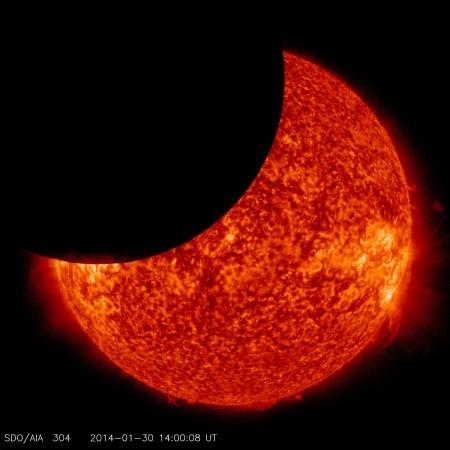
Stargazers around the world will be greeted with a spectacular view of the total solar eclipse on Friday, which will be most visible from the far northern Svalbard archipelago and Faroe Islands.
To watch this breathtaking celestial phenomena, the farsighted ones have already travelled all the way to the remote Norwegian archipelago, where for this one day, the hotel rooms have been booked since 2008.
Those in the United States, who will be missing out on this celestial wonder can conveniently watch the live streaming of the eclipse. The Slooh Community Observatory will have a live streaming up and running from 8.45 am GMT.
The Friday's eclipse will be a rare celestial occurrence where a full solar eclipse will coincide with a vernal equinox, which marks the start of spring for the northern hemisphere.
Technically, on Friday the moon will be its closest to Earth – making for a supermoon -- however, since Friday is also a new moon, it won't be visible. The 20 March solar eclipse is also one of the last eclipse for this year.
Besides, this solar eclipse on the equinox will only happen three more times this century.
Here we have listed out some of the most amazing spots from where skygazers will be witnessing the rare celestial treat:
1. The Faroe Islands and the Norwegian islands of Svalbard
The total solar eclipse will be most visible in these far-flung islands where the moon will fully obscure the sun for over two minutes starting at 9.41 am local time. The eclipse in total will last for almost 2.5 hours.
To witness this celestial wonder, according to AFP, more than 8,000 visitors have already headed to the Faroe Islands, where the total eclipse is due to begin at 9:41 am (0941 GMT), while 1,500 to 2,000 astronomy enthusiasts are headed to Svalbard, where it should start at 11:11 am (1011 GMT).
According to CNN the islands for long have remained a favoured destination for astronomers, owing to their low light pollution. It is reported that the first enterprising guest booked a room 10 years in advance to witness this Friday's eclipse, according to CNN.
2. UK and Europe
Observers in the United Kingdom will be treated to an impressive partial event and since this eclipse is the last that UK will get until 2090, several special viewing areas have been chalked out for enthusiast.
In Edinburgh the partial eclipse will start at 8:30 am GMT and will be its deepest at 9:35 am GMT as 93% of the Sun gets covered.
In Manchester, the event begins at 8:26 am GMT and it will reach its peak at 9:32am GMT. London will witness an 84% eclipse, beginning at 8:24am GMT and peaking at 9:30am GMT.
To watch the celestial phenomena, the Equinox Sun, Londoners can head to The Royal Observatory Greenwich, which will be open from 8am.
The Flamsteed Astronomy Society, the Royal Astronomical Society, Baker Street Irregular Astronomers, the Hampstead Scientific Society and Northolt Branch Astro also will be setting up special viewing events all set with equipment.
To view the timing for the eclipse in Dublin, Lisbon, Madrid, Paris, Greenland, Brussels and other European cities, you can head to eclipsewise.com.
3. North and west Africa and the Middle East
Across a wide swath of northern Africa, between 40 and 90% of the eclipse will be visible. The maximum eclipse in Cairo will be at 9.47 GMT and 9.18 GMT in Tripoli. Eclipse times in the Atlantic, Africa and Asia can also viewed at Eclipsewise.com.
4. Saint John's in Newfoundland, Canada
A small number of Canadians will get to catch a rare glimpse of the 2015 eclipse. Saint John's in Newfoundland Canada will be only place in North America from where the eclipse will be visible for a short time.
Watch Total Solar Eclipse 2015 Live
Those who are not lucky enough to witness the last solar eclipse of 2015, can just log onto the Internet and enjoy the celestial wonder.
Besides the online Slooh Community Observatory, the total solar eclipse live streaming will also be available on Space.com. The Virtual Telescope Project will have a live coverage of the eclipse starting from 8am GMT.

















